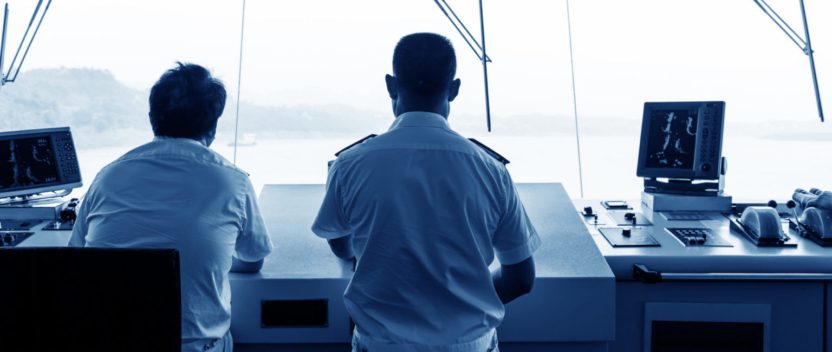Electronic navigation – at the tipping point
This month Digital Ship has run an article featured GNS’s Insight led approach to navigation. The full article is below. You can also find it in full in the Digital Ship March issue.
Electronic navigation – at the tipping point
Data captured from millions of actual vessel voyages has shown that many shipping companies are yet to realise the economic benefits of electronic navigation and are still overspending on paper and digital chart products, writes Capt. Mike Bailey, GNS
After nearly a decade of recession in the main shipping markets, it would be natural to assume that shipowners have done every- thing in their power to control their oper- ating costs. In the same way it would be natural to assume that they had done everything they could to achieve efficien- cies afforded by smarter use of business intelligence.
It’s surely a surprise then, to hear that the shipping industry is still spending mil- lions of dollars on navigational supplies they don’t actually need and that crews are wasting hundreds of hours needlessly cor- recting navigation charts and publications because they have not invested in the potential of digital navigation.
Beyond the operational aspects of ECDIS and electronic navigation data, the failure to properly implement an electron- ic navigation strategy means some owners are exposing themselves to entirely avoid- able safety and compliance risks.
The solution is not spending more money on hardware or charts. Instead owners can begin to get a deeper under- standing of their usage, needs and oppor- tunities for efficiencies by working smarter, based on data intelligence.
Overspending
It’s a typically hot and humid afternoon in Singapore and another large and well- known shipping company has just learned that they have overspent by more than $9,000 per year on navigational supplies for just one vessel in their fleet.
In Athens, the week before, a similar story was played out, only that time the data presented highlighted large numbers of unnecessary paper charts being carried onboard, all still being corrected on a weekly basis, taking endless hours of crew time, despite the vessel’s Safety Certificate Form E specifying ENCs as both its primary and secondary means of navigation.
Some 15 years after the first ECDIS performance standard was approved, our
analysis of shipping company purchasing habits has identified that owners of ships that have implemented digital navigation are very far from realising its true benefits.
Instead of achieving the intended oper- ational efficiencies and cost savings, ves- sels are spending on average 15 per cent more than necessary on navigational products and services – to put that into real money that’s anything between $375 and $1,800 per vessel per year.
Why? Well according to our research and analysis, many companies are failing to capitalise on just in time delivery of data to drive cost savings, vessel inventories are often not being regularly reviewed against routes, Flag State requirements or technical library requirements, and the software often installed on board to help navigate more efficiently isn’t being fully exploited.
Navigational product purchasing is still more often than not habitual, based on what has always been bought, rather than what is actually needed. As a result, ineffi- ciencies, which can equate to many thou- sands of wasted dollars every year, are commonplace.
The ability to make such a claim is not based on estimation or looking at past orders. Using data intelligence tools we are able to collect, store and analyse millions of data points generated by actual vessels using our software systems, ranging from AIS positions to Port State Authority and Flag State data, every day. We can use that data to compare what shipping companies are purchasing against actual trading and compliance requirements in detail.
Since 2015, this has allowed us to cap- ture 890,000,000 AIS positions for 75,000 vessels above 400 GRT. The output pro- vides an extremely clear picture of the areas where a company may be over- spending that can be used to refine vessel inventories to match what is really needed and then, importantly, maintain them at the most efficient levels.
Perhaps one of the more surprising findings from our work in this area has been the
Analysis of ENC spend comparing vessel position data with ENCs purchased across a fleet. In some cases ENCs purchased but not used are in excess of 70 per cent
unnecessary spending it has uncovered on digital purchases. Using data analysis, we have been able to identify that as many as 70 per cent of ENCs purchased are never actually used, equating to anything between $1,000 and $5,000 per year.
ENC efficiency
We attribute this to one of two things. First, a persisting ‘just in case’ mindset; in other words, vessels are carrying large numbers of digital charts and publications onboard just in case they need to sail in those waters in the way that they used to with paper charts, or secondly, the need to download ENCs in order to plan routes that the ves- sel never actually ends up sailing.
This is despite ENCs and digital publications being easily accessed via permit keys that can be e-mailed to ships within 10 minutes, and the widespread availabili- ty of ‘pay as you sail services’ that provide always-on access to charts.
We use the same data analysis process to help customers identify potential safety and compliance vulnerabilities and reduce the risk of negative observations, deten- tions or deficiencies.
In one example, having reviewed an index and compared it to the vessel’s trading and Flag State requirements, we identified 23 publications held that were not required, but 49 publications that should have been on board, but were not.
Our data analysis is also helping to identify other purchasing efficiencies. We recently helped a shipping company in Hamburg to adjust ENC purchasing from a traditional voyage-by-voyage basis to a fixed price bundle.
The fleet was tracking through 42,731 ENCs and placing 2,870 ENC orders a year, which, based on PWC’s estimate of $35 for processing an order end-to-end, including raising the purchase order, checking an invoice and making the BACs payments, was costing the company a stag- gering $100,000 per year.
In addition, we were able to help the company switch to digital as the primary means of navigation and reduce paper holdings down to ‘Get Me Home’ levels, which delivered further savings of more than $60,000 and over 1,665 man hours previously spent on maintenance and updating of paper charts.
There will be exceptions to every rule but our research suggests that while ECDIS has now reached a tipping point in terms of adoption and application on a daily basis, many shipping companies are still working in ways that are inefficient in terms of cost and time – and as a result are missing out on the tangible benefits of the transition to digital navigation.
NAVIGATION SPENDING BY NUMBERS
- Data analysis has shown that ship- ping companies are routinely spend- ing 15 per cent more per vessel per year than they need to on charts and publications
- In a random sample of 10 globally trading vessels analysed in 2017 the average overspend is an eye-watering $1,300 on navigational publications, $4,600 on paper charts and $1,100 on technical library titles
-
Navigation overspend is not limited to paper supplies – data analysis has uncovered many instances of vessels not using or needing up to 70 per cent of the electronic charts they are buying
Globally, the use of paper navigation- al charts reduced by more than 30 per cent in the 12 months from July 2016 to July 2017 as shipping companies moved to comply with legislation requiring their vessels to use ECDIS and ENCs
Navigation-related observations and deficiencies have increased 22.5 per cent since 2013, and deficiencies relating to paper publication corrections more than doubled between 2014 and 2016
About the Author
Capt. Mike Bailey is head of navigation products at maritime navigation technology company GNS


